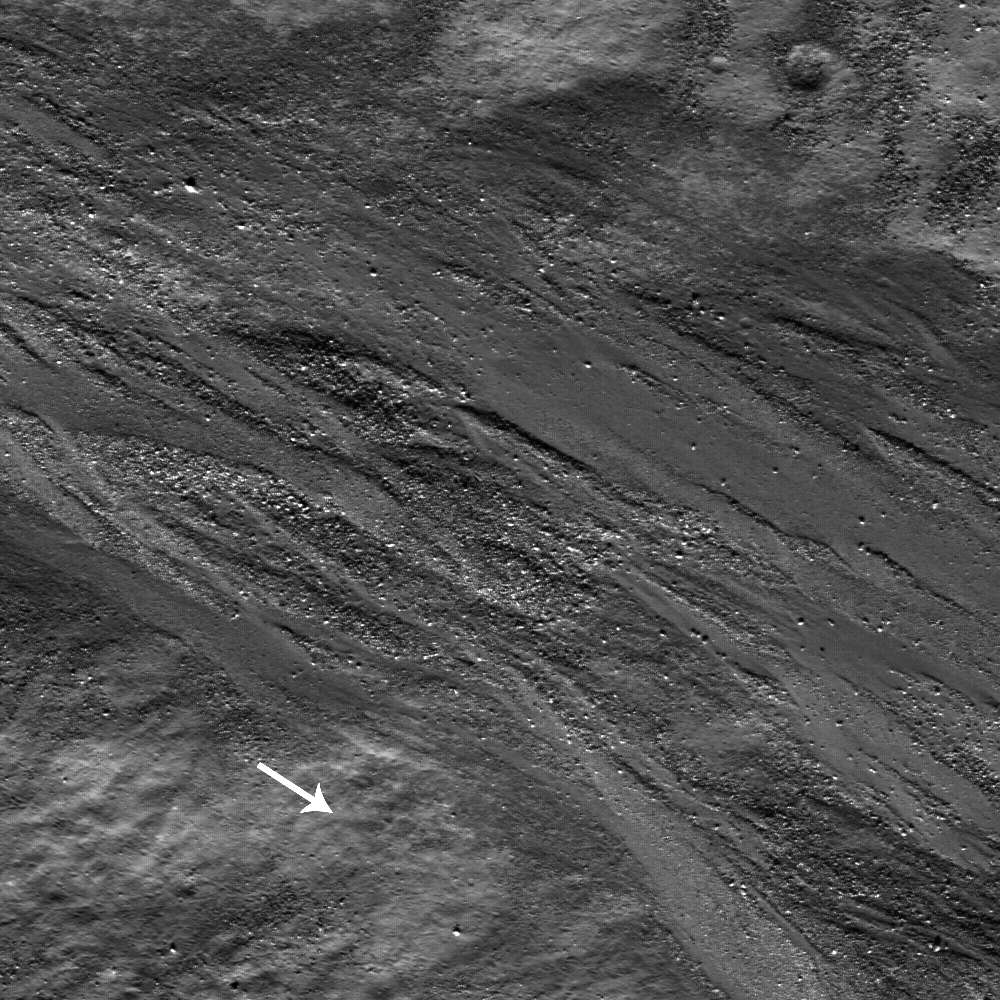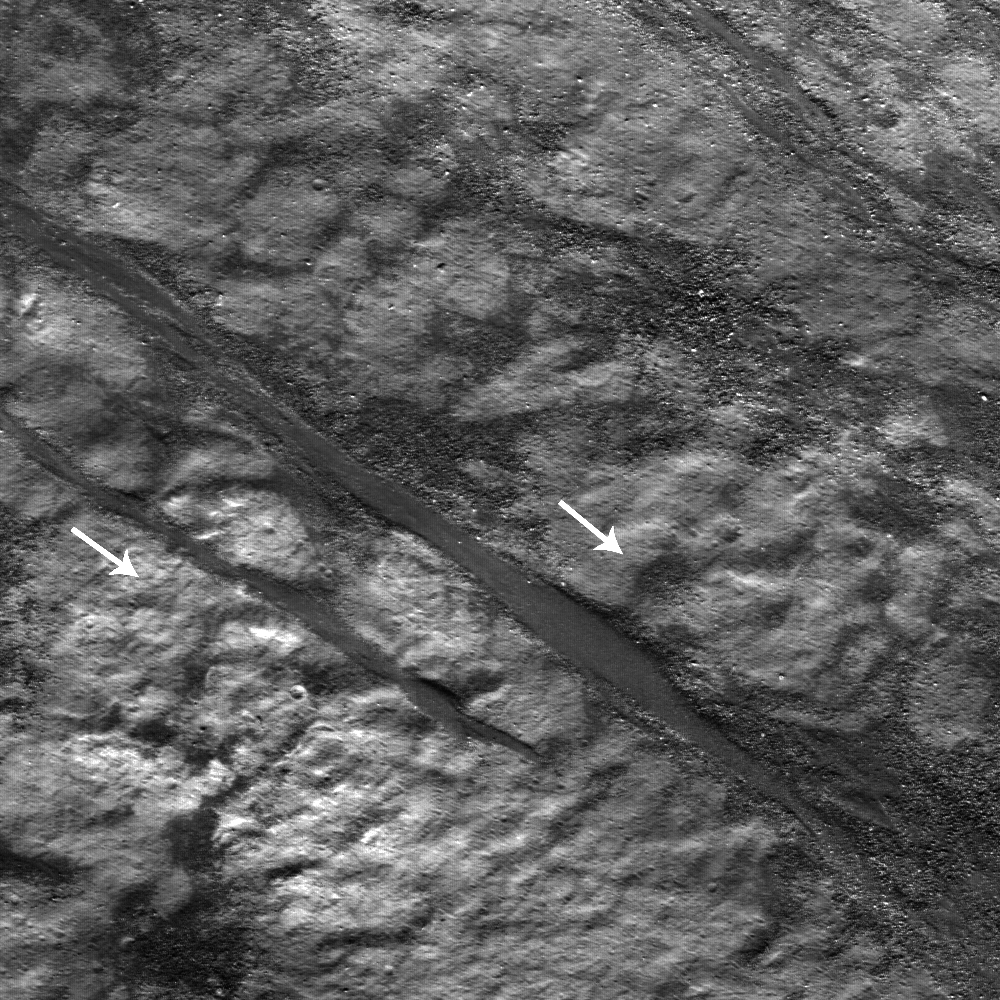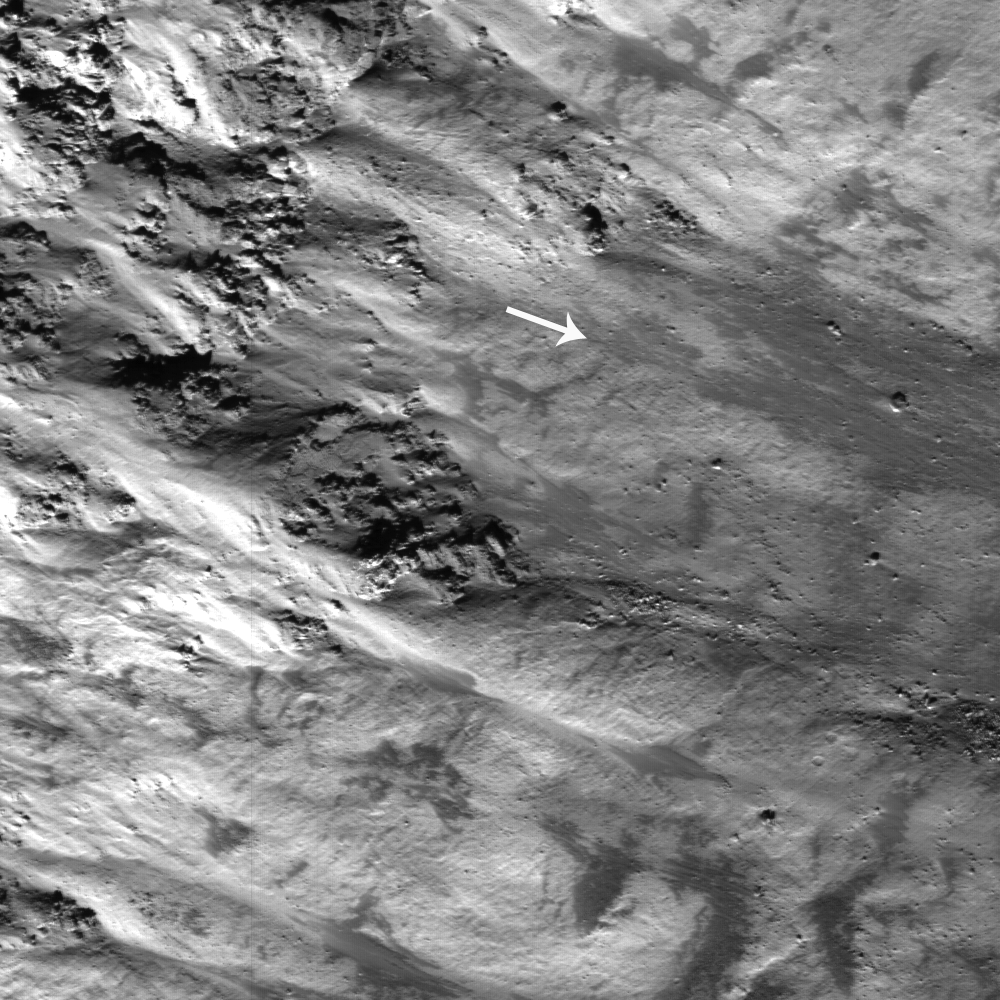
Within the Crater Epigenes A there is a remarkable variety of impact melt features. Impact melt is common and occurs when energy released by an impact causes rocks and regolith in the target to melt. Impact melts form small particles, known as impact melt spherules, or large, smooth pools and sheets of melt that coalesce in low areas within the crater. While the material is molten it behaves like lava, flowing down-slope. Emplacement of the melt is thought to occur during the excavation and modification stages of crater formation. An outward surge of impact melt (possibly caused by the collapse of the central uplift) falls on the rim, wall, and ejecta blanket of the impact crater and then gravity pulls the melt downward during the modification stage of the impact crater's formation.
Thin impact melt deposits are especially vulnerable to erosion on Earth, however, the Moon lacks erosive agents like wind and water, so the lunar surface is an excellent place to study impact melts.
Browse the whole NAC image!
Published by Sarah Braden on 23 October 2009

